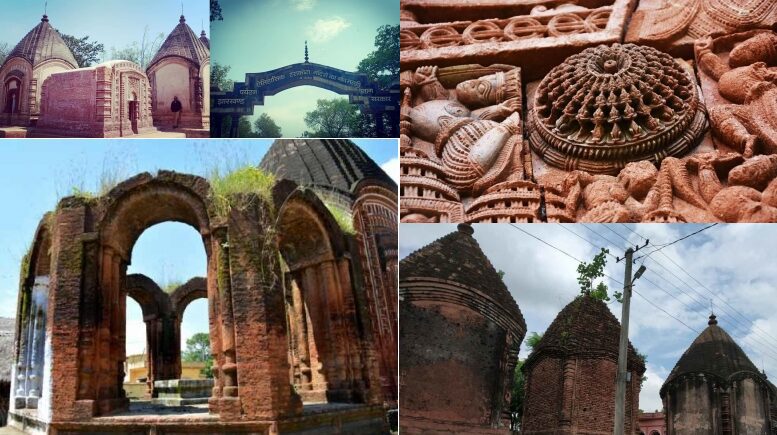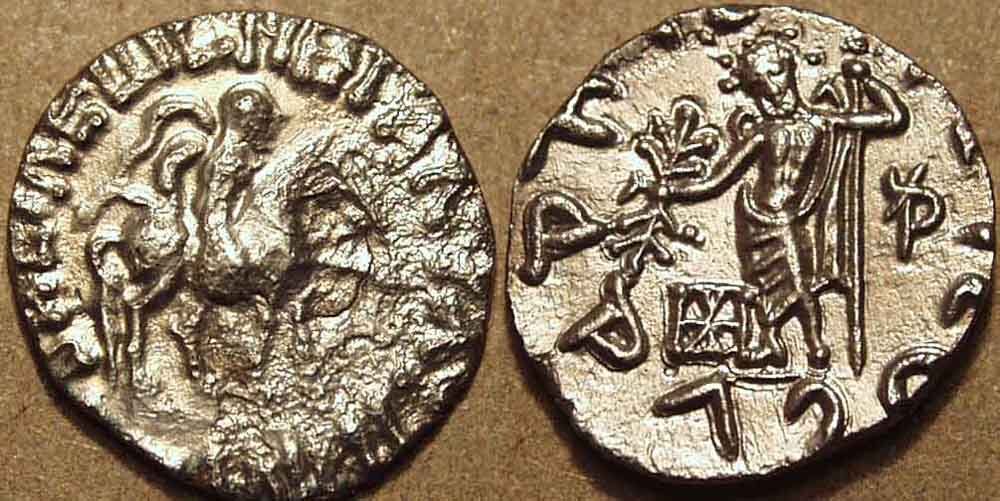December 8, 2025 5:30 pm
Ancient Period in Jharkhand
The Ancient Period in Jharkhand marks a significant chapter in the state’s history, characterized by its strategic importance, vibrant trade connections, and cultural interactions with prominent dynasties like the Mauryas, Guptas, and Post-Gupta rulers. This period laid the foundations for Jharkhand’s socio-economic and cultural identity.

1. Mauryan Period (321 BCE – 185 BCE)
Strategic Importance in the Ancient Period in Jharkhand
During the Mauryan Empire, the Ancient Period in Jharkhand was distinguished by its pivotal role as a transit point between Magadha (modern Bihar) and South India. This strategic location enabled:
- Flourishing Trade: Jharkhand’s abundant natural resources, including minerals and forest produce, became integral to regional and inter-regional commerce.
- Cultural Integration: The area acted as a conduit for cultural and religious exchanges between northern and southern India.
- Administrative Oversight: The Mauryan administration prioritized Jharkhand to ensure political stability and economic prosperity.

Kautilya’s Arthashastra
The Arthashastra, authored by Chanakya (Kautilya), provides valuable insights into the governance and strategic role of the Ancient Period in Jharkhand. The text refers to the region as Kukuta or Kukutadesha, highlighting its administrative and military significance. Mauryan officials were stationed in Jharkhand to:
- Maintain trade routes and infrastructure.
- Prevent rebellions from local tribal groups.
Ashoka’s Influence in the Ancient Period in Jharkhand
The reign of Emperor Ashoka further underscores the significance of Jharkhand:
- 13th Rock Edict: References to provinces neighboring Jharkhand indicate Ashoka’s efforts to consolidate control over the region.
- Spread of Dhamma: Ashoka sent emissaries to promote Buddhist principles among Jharkhand’s indigenous tribes. Despite this, the tribes retained their distinct cultural identity, limiting the influence of Buddhism.
2. Post-Mauryan Period in the Ancient Period in Jharkhand: Indo-Scythian Influence
The Post-Mauryan Period in the Ancient Period in Jharkhand highlights the indirect impact of foreign incursions, particularly the Indo-Scythians (referred to as Mlechhas in ancient texts), and their influence on the region’s trade, economy, and cultural exchanges. While Jharkhand did not serve as the core of Indo-Scythian rule, its integration into broader trade networks demonstrates its growing economic and strategic significance during this era.

Influence of Indo-Scythians on the Ancient Period in Jharkhand
The Indo-Scythians, a nomadic group from Central Asia, entered India following the decline of the Mauryan Empire. Their presence had widespread effects across the Indian subcontinent, including:
- Expansion of Trade Networks: The Indo-Scythians actively expanded trade routes, connecting regions like Jharkhand to larger trade hubs in the north and west during the Ancient Period in Jharkhand.
- Coinage and Economic Integration: The dissemination of Indo-Scythian coinage and its discovery in Jharkhand indicates the region’s inclusion in their economic systems, further highlighting its importance during the Ancient Period in Jharkhand.
Trade and Coinage Evidence in the Ancient Period in Jharkhand
Roman Coins in Singhbhum
- Discovery: Coins from the Roman Empire have been unearthed in Singhbhum, highlighting Jharkhand’s participation in international trade routes during the Ancient Period in Jharkhand.
- Implications: This suggests that Jharkhand was indirectly connected to Indo-Roman trade, facilitating the exchange of goods like spices, textiles, and minerals.

Indo-Scythian Coins in Ranchi and Chaibasa
- Findings: Coins from the Indo-Scythian period have been discovered in Ranchi and Chaibasa, emphasizing the region’s economic exchanges with northern and western powers during the Ancient Period in Jharkhand.
- Significance: These coins point to possible alliances, trade relationships, or even tributary arrangements with the Indo-Scythians, further indicating Jharkhand’s importance in ancient economic systems.

Trade Networks and Economic Integration
The presence of foreign coinage in Jharkhand during the Ancient Period in Jharkhand underscores the region’s role in larger trade and economic systems:
- Export of Minerals: Jharkhand’s rich deposits of iron, copper, and other minerals likely made it a vital supplier for weaponry, tools, and ornaments in both regional and international markets during the Ancient Period in Jharkhand.
- Forest Produce: Products like lac, honey, and herbal medicines were highly sought after and formed an essential part of trade.
- Integration into Indo-Scythian Systems: The Indo-Scythians leveraged existing trade routes, enhancing Jharkhand’s connectivity with major trade centers in India and beyond during the Ancient Period in Jharkhand.
Cultural and Economic Impact of Indo-Scythian Influence
- Economic Prosperity: The integration into larger trade networks brought economic benefits to Jharkhand, as evidenced by the circulation of foreign coins during the Ancient Period in Jharkhand.
- Cultural Exchange: The influx of traders and their interactions with local communities introduced new ideas, technologies, and goods, enriching Jharkhand’s cultural fabric in the Ancient Period in Jharkhand.
- Continuity of Tribal Identity: Despite these external influences, Jharkhand’s tribal communities retained their distinct cultural practices and governance systems, demonstrating resilience and adaptability throughout the Ancient Period in Jharkhand.
Significance of the Post-Mauryan Period in the Ancient Period in Jharkhand
The Post-Mauryan Period in the Ancient Period in Jharkhand is a testament to the region’s growing relevance in ancient India’s economic and trade landscape. The discoveries of Roman and Indo-Scythian coins highlight Jharkhand’s role in facilitating connections between the Indian subcontinent and global markets. This period also underscores the enduring strength of tribal identity amidst external influences, a recurring theme in the Ancient Period in Jharkhand.
3. Gupta Period (3rd Century CE – 6th Century CE)
- Often considered the Golden Age of Indian history, the Gupta period saw significant advancements in culture, science, art, and governance. Jharkhand was also influenced by Gupta expansion, especially under Emperor Samudragupta.
- Samudragupta’s Campaigns:
- Samudragupta expanded his empire to include Jharkhand, referring to it as the Mundar Region. His Allahabad Pillar Inscription documents these campaigns, highlighting the region’s tribal governance and its integration into the Gupta administrative system.
- Jharkhand was called the Kingdom of Munda, reflecting the prominence of Munda tribes and their acceptance of Gupta suzerainty.
- Archaeological Evidence in Jharkhand During Gupta Rule:
- Madhuhi Hill (Hazaribagh): This site contains stone temples built during the Gupta period, indicating the spread of Hinduism.
- Satgawan (Koderma): Known for temple ruins, Satgawan provides evidence of religious developments during the Gupta reign.
- Pithoria (Ranchi): Features ancient water reservoirs on hilltops, showcasing engineering advancements in the Gupta period.
- These sites confirm the Gupta influence and the architectural, cultural, and religious integration of Jharkhand into the broader Indian civilization.
Economic and Cultural Developments in Ancient period in Jharkhand during Gupta Age
The Ancient Period in Jharkhand flourished under the Gupta Empire, often referred to as India’s Golden Age. Jharkhand’s rich natural resources, particularly iron and copper, played a vital role in:
- Mining and Metallurgy: The extraction and trade of minerals contributed significantly to the Gupta economy.
- Weapon Manufacturing: Iron from Jharkhand was utilized in the production of tools and weapons, aiding Gupta military campaigns.
Religious Influence
- The Gupta rulers promoted Hinduism, leading to the construction of temples and the integration of local tribal deities into the broader Hindu pantheon.
- Jharkhand also saw the coexistence of Buddhist and Jain influences during this time, contributing to its cultural diversity.
Integration with Trade Networks
The Ancient Period in Jharkhand witnessed the expansion of trade routes under Gupta rule. These networks connected Jharkhand to major urban centers in northern India, enhancing the region’s economic significance.
4. Post-Gupta Period
- After the decline of the Gupta Empire, regional kingdoms and dynasties rose to prominence, including the Gauda Kingdom under Shashanka.
- Shashanka’s Rule:
- Shashanka, the ruler of Gauda (present-day Bengal), was a powerful figure who extended his reign into Jharkhand. He established administrative centers and sought to consolidate Hindu religious influence.
- Shravya Pura: One of the main markets in Jharkhand during Shashanka’s rule, indicating economic prosperity and organized governance.
- Shashanka promoted Shaivism and built several Shiva temples in Jharkhand, which became centers of cultural and spiritual significance, particularly for the indigenous communities.
- Decline of Buddhism:
- During this period, Hinduism began to gain more prominence as Shashanka’s policies were more inclined towards promoting Shaivism.
- The indigenous tribes were gradually influenced by these Hindu beliefs, resulting in a decline of Buddhist practices in Jharkhand, though some remnants of Buddhism persisted.
- Harsha Dynasty:
- Harshavardhana of the Harsha dynasty extended his influence up to the borders of Jharkhand.
- His court poet Banabhatta mentions Jharkhand’s neighboring regions in his work “Harshacharita,” indicating Harsha’s control or influence over Jharkhand’s periphery.
5. Pala Dynasty and Later Period
- The Pala Dynasty from Bengal brought a new wave of Vajrayana Buddhism to Jharkhand. This period is marked by the construction of monasteries and the spread of Buddhist practices, especially among some tribal communities.
- Cultural Exchange and the Nagbanshi Dynasty:
- The Nagbanshi Dynasty rose in Jharkhand around this time, establishing local rule and integrating tribal governance with Hindu customs.
- The Nagbanshis played a significant role in the region’s social and political fabric, fostering a mix of local and imported cultural elements that shaped Jharkhand’s unique identity.
- Trade and Cultural Hub:
- Chandrapur and other areas of Jharkhand served as links in the cultural and trade exchange between the Gangetic plains and South India.
- Discoveries of coins, inscriptions, and temples from this era underscore Jharkhand’s importance as a hub for economic and cultural activities in ancient India.
Other Dimensions of the Ancient Period in Jharkhand
The Ancient Period in Jharkhand encompasses a range of influences and developments that highlight its unique role in history. Beyond its trade and economic significance, this period reveals diverse aspects such as cultural exchanges, religious transformations, and governance systems. Here are additional dimensions that add depth to the study of the Ancient Period in Jharkhand:
1. Religious Dimensions
The Ancient Period in Jharkhand was marked by interactions with major religious movements in India. Although tribal practices remained dominant, external influences introduced new religious ideas.
Spread of Buddhism
- Emperor Ashoka’s efforts to propagate Buddhism included sending emissaries to the tribal regions of Jharkhand.
- Buddhist principles of Dhamma were promoted, but their reach was limited as tribal communities preserved their animistic and nature-worshipping traditions.
Hindu Influence
- The Gupta period saw the introduction of Hindu temples and the integration of tribal deities into Hindu pantheons.
- Tribal rituals and symbols were often assimilated, blending local traditions with mainstream Hindu practices.
Jainism
- Jharkhand’s proximity to regions like Magadha facilitated the spread of Jainism during the Mauryan and Post-Mauryan periods.
- Jain texts reference Karna Desh, which included parts of Jharkhand, indicating its inclusion in Jain cultural and spiritual domains.
2. Tribal Autonomy and Governance
During the Ancient Period in Jharkhand, tribal governance systems thrived alongside influences from larger empires.
Self-Governance
- Tribal groups like the Mundas, Santhals, and Asurs maintained autonomous governance structures based on clan systems and communal decision-making.
- Tribal leaders or chieftains, such as Pahans, acted as both political and spiritual heads.
Interactions with Empires
- The Mauryas and Guptas established nominal control over Jharkhand, often appointing regional administrators to oversee the trade routes and prevent uprisings.
- Despite this, the dense forests and rugged terrain allowed tribal communities to maintain significant independence.
3. Metallurgy and Technological Advancements
Jharkhand’s natural resources played a vital role in technological developments during the Ancient Period.
Iron Smelting
- The Asur tribe was renowned for its expertise in iron smelting, producing tools, weapons, and artifacts that were traded widely.
- Jharkhand’s iron deposits contributed to the Mauryan empire’s military strength, as iron weapons were essential for their conquests.
Copper and Gold Mining
- Copper and gold mining were prominent in regions like Singhbhum, where these metals were used for trade, ornamentation, and rituals.
4. Cultural Exchanges
The Ancient Period in Jharkhand was a melting pot of cultures, with its tribal traditions enriched by interactions with neighboring regions and empires.
Art and Symbols
- Tribal art forms, such as rock paintings, depict scenes of daily life, nature, and religious practices, showcasing a blend of local and external influences.
- The assimilation of tribal symbols into broader Indian art forms began during this period.
Festivals and Rituals
- Festivals like Sarhul and Karma have their origins in the Ancient Period in Jharkhand, reflecting the enduring connection between the tribes and nature.
5. Environmental Interactions
Jharkhand’s geography significantly influenced its history during the ancient period.
Dense Forests as Barriers
- The dense forests and rugged terrain of Jharkhand served as natural barriers, protecting its tribes from external invasions and ensuring a degree of autonomy.
- These forests were also central to the tribal way of life, providing resources for sustenance and trade.
Role in Trade
- Forest produce, such as lac, honey, and medicinal herbs, was highly valued and formed a key component of trade during the ancient period.
6. Linguistic Contributions
The Ancient Period in Jharkhand saw the development of tribal languages and scripts.
Indigenous Languages
- Tribal languages like Mundari and Santhali have their roots in this period, reflecting the rich oral traditions of the region.
- These languages were instrumental in preserving myths, legends, and historical narratives.
Influence of Prakrit and Sanskrit
- Interactions with the Mauryas and Guptas introduced Prakrit and Sanskrit into Jharkhand, which influenced the evolution of tribal languages.
7. Role in Early Indian Economy
Jharkhand was an important contributor to the economy during the ancient period, owing to its natural resources and strategic location.
Trade Routes
- Jharkhand served as a crucial link between Magadha in the north and southern Indian kingdoms, facilitating the movement of goods and ideas.
- Its resources, including minerals and forest products, were in high demand in regional and international markets.
Tributary Relationships
- Tribal leaders often paid tribute to empires like the Mauryas in exchange for autonomy, further integrating Jharkhand into ancient economic systems.
8. Strategic Geopolitical Role
The Ancient Period in Jharkhand underscored its strategic position in the Indian subcontinent.
Link Between North and South India
- Jharkhand acted as a vital corridor connecting the powerful kingdoms of the Gangetic Plains with southern Indian polities like the Satavahanas.
- Trade routes passing through Jharkhand facilitated the movement of goods, ideas, and people, making it a nexus for cultural and economic exchanges.
Defensive Terrain
- Jharkhand’s rugged terrain and dense forests provided natural fortifications, enabling its tribes to resist invasions from larger empires.
- The region served as a refuge for smaller groups fleeing conflict in neighboring territories, contributing to its cultural diversity.
9. Social Structures and Tribal Hierarchies
The Ancient Period in Jharkhand witnessed the evolution of social organization among its indigenous tribes.
Clan-Based Society
- Tribes such as the Mundas, Santhals, and Oraons organized themselves into clans, each governed by a chieftain or Pahan, who was both a political leader and a spiritual guide.
- Social hierarchies were fluid, with decisions often made collectively through tribal councils.
Role of Women
- Women held prominent positions in Jharkhand’s tribal societies, participating in agricultural activities, rituals, and community decision-making.
- They were revered as custodians of cultural traditions, particularly through oral narratives and festivals.
10. Religious Tolerance and Syncretism
The Ancient Period in Jharkhand was characterized by a coexistence of tribal animism and mainstream religious influences.
Animism and Nature Worship
- Indigenous tribes worshipped natural elements like the Sun, Moon, trees, and rivers, reflecting their deep connection with the environment.
- Sacred groves, known as Sarna, were central to religious practices and remain important to tribal communities today.
Coexistence of Religions
- Jharkhand saw the introduction of Buddhism, Hinduism, and Jainism during this period, yet tribal traditions continued to thrive.
- The integration of tribal deities into Hindu and Jain temples demonstrates a cultural syncretism unique to the region.
11. Urbanization and Settlements
The Ancient Period in Jharkhand also witnessed the emergence of early settlements and urban centers.
Proto-Urban Settlements
- Archaeological evidence suggests the existence of proto-urban centers in regions like Singhbhum and Ranchi, where trade and mining activities flourished.
- These settlements served as hubs for resource extraction and the manufacture of goods, contributing to regional economies.
Role in Urban Networks
- Jharkhand’s resources supplied materials for urban centers in the Gangetic plains and beyond, supporting the construction of infrastructure and the production of goods.
12. Technological Innovations
The Ancient Period in Jharkhand was marked by significant advancements in technology, particularly in metallurgy and agriculture.
Advancements in Metallurgy
- The Asur Tribe was a pioneer in iron smelting, with their expertise influencing the development of weapons and tools for neighboring regions.
- Copper and gold artifacts discovered in Jharkhand point to an advanced knowledge of mining and metalworking.
Agricultural Practices
- Tribal communities developed sustainable agricultural techniques suited to Jharkhand’s terrain, including terrace farming and the cultivation of drought-resistant crops.
- These practices ensured food security and supported growing populations in the region.
13. Contribution to Knowledge and Literature
The Ancient Period in Jharkhand also contributed to India’s intellectual and literary heritage.
References in Ancient Texts
- Kautilya’s Arthashastra referred to Jharkhand as Kukuta or Kukutadesha, emphasizing its administrative and strategic significance.
- Jain and Buddhist texts mentioned the region as part of their expanding cultural and spiritual geographies.
Oral Traditions
- The tribal communities of Jharkhand preserved their history, myths, and folklore through rich oral traditions that continue to inform our understanding of the region’s past.
14. Art, Craft, and Cultural Expressions
The Ancient Period in Jharkhand was a vibrant era for art and craft, showcasing the creativity and ingenuity of its people.
Tribal Art
- Early forms of tribal art, such as rock paintings, depicted hunting scenes, rituals, and everyday life, providing a glimpse into the region’s socio-cultural fabric.
- The use of natural dyes and locally sourced materials demonstrates an eco-friendly approach to artistic expression.
Handicrafts
- The production of pottery, beadwork, and metal ornaments flourished during this period, with these crafts playing an important role in trade.
15. Environmental Management
The Ancient Period in Jharkhand reflects an early understanding of environmental management and sustainability.
Sacred Groves and Conservation
- Tribal communities maintained sacred groves (Sarna), which served as both religious sites and conservation areas for biodiversity.
- Ritual practices ensured the protection of natural resources, creating a sustainable balance between human activities and the environment.
Resource Utilization
- Forest produce like lac, honey, and medicinal plants was sustainably harvested for local use and trade, ensuring the preservation of Jharkhand’s natural wealth.
Legacy of the Ancient Period in Jharkhand
The Ancient Period in Jharkhand laid the foundations for the region’s identity, blending external influences with indigenous resilience. The period’s rich tapestry of trade, culture, religion, and governance continues to shape the historical narrative of Jharkhand. Its enduring traditions and strategic importance make this period a cornerstone of Jharkhand’s history.
Conclusion
Jharkhand’s ancient history reflects its role as a crucial junction for trade, governance, and cultural exchange. From the Mauryan to the Gupta and later dynasties, each period contributed layers to Jharkhand’s diverse heritage. The region’s integration into larger empires brought technological advancements, religious diversity, and administrative structures that influenced Jharkhand’s tribes and shaped its historical trajectory. The archaeological sites, inscriptions, and remnants of ancient empires continue to highlight Jharkhand’s significant place in India’s ancient history.
Some Useful Links >>
JPSC Notes: Access expertly curated notes covering essential topics for both JPSC Prelims and Mains exams.
14th JPSC PT Exam Comprehensive Test Series: Enhance your preparation with a structured test series designed to cover all aspects of the JPSC Preliminary Test syllabus, emphasizing Jharkhand-specific topics and current affairs.
JPSC Notification 2024: Stay informed about the latest updates, including exam dates, eligibility criteria, and vacancy details for the JPSC 2024 examination.
General Introduction to Jharkhand for JPSC Exam: Gain a comprehensive understanding of Jharkhand’s history, geography, economy, and culture, crucial for the JPSC exam.
official Website: https://www.jpsc.gov.in/






